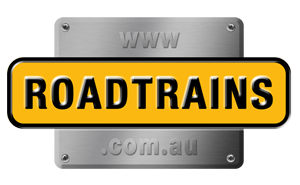Wilson Pace Setter bottom dump trailer review
Words and Photography by Howard Shanks
A tough economy, increased regulation along with a national driver shortage has taken its toll on transport companies. For farmers, it means that good transport operators are charging more and are getting harder to find as Howard Shanks discovered.
 The situation has inspired more farmers like Darren Longmire from Spalding South Australia to look into buying their own truck and grain trailer. And it’s encouraged trailer makers to look at farmers more often as potential customers.
The situation has inspired more farmers like Darren Longmire from Spalding South Australia to look into buying their own truck and grain trailer. And it’s encouraged trailer makers to look at farmers more often as potential customers.
The rural town of Spalding is a leisurely two-hour drive north west of Adelaide and is at the center of the largest water catchment area in South Australia. Its here a network of streams, creeks and rivers meet four kilometers south of the town to form the Broughton River, which was mapped and named in 1839 by explorer Edward John Eyre. And not only does the river system help sustain productive grain farms along with sheep and beef cattle runs, but the Broughton attracts anglers from far and wide to challenge its cunning wild trout, however more on that another time.
The Longmires have been cropping in the area for a few generations, today David Longmire heads the family business that grows approximately 3000 acres of mixed grains annually.
“We mainly grow, wheat, barley and canola along with export oats and hay,” David smiled as he introduced himself.
“I initially went looking at trailers and trucks to improve our productivity”, he revealed. “I wanted something that was multipurpose, something I could utilise all year round.”
 “The imported Wilson Pacesetter Super-B ‘bottom dump’ was ideal for our cropping operation. It has an excellent tare weight so we can get exceptional payloads at harvest time. It has compartments in each trailer so we can use it at seeding time to fill our air-seeder which is an added bonus.”
“The imported Wilson Pacesetter Super-B ‘bottom dump’ was ideal for our cropping operation. It has an excellent tare weight so we can get exceptional payloads at harvest time. It has compartments in each trailer so we can use it at seeding time to fill our air-seeder which is an added bonus.”
The Wilson Pacesetter Super-B ‘bottom dump’ trailers are made in Sioux City Iowa by Wilson trailers and they’re considered the premium trailer for commodity haulers.
“We have a pair of Michels augurs that we fit to our Wilson trailers during seeding time. We fill the front compartment with fertiliser and the middle compartment with seed in addition we use the rear compartment to store different varieties of seed when needed,” David added.
“It was a big step integrating the transport aspect into our farming operation, but a necessary one,” David conceded. “Initially we looked a various options and weighed up the pros and cons of new verses second hand. We also investigated various financial scenarios for instance whether to pay cash for used equipment or finance new. In the end we believed the productivity and efficiency gains of the new Wilson Pacesetter Super-B would provide the most economical solution for us. Then of course there were the safety features of the new Wilson Trailer, which are also a big plus around the farm and because it is a bottom discharge and not a tipper there is almost a $10K insurance saving, David added.
Sadly, most farmers who go out to buy their first grain trailer aren’t in search of the ultimate in features. Many do just fine picking up a used trailer. But with more than 20 different companies building new trailers, and more used trailers hitting the market, your field of choices is getting larger. It often comes down to deciding between two or three equally good trailers at a competitive price. In addition to finding a trailer that’s in good condition, you’ll also want to look at some of the unique features of different trailers that can make your life easier when it’s time to take your grain to the silos.
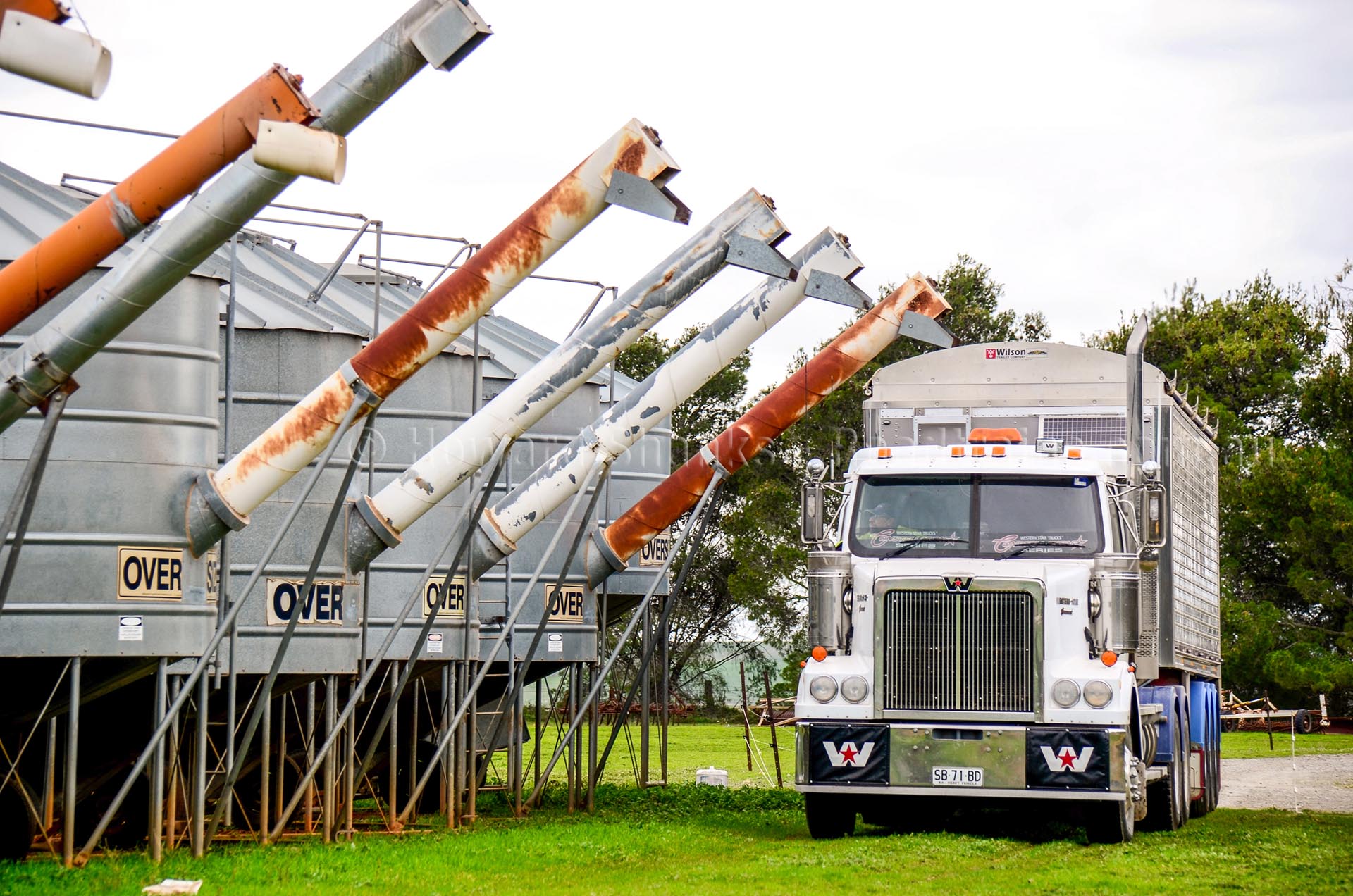 Flick through a copy of “Deals on Wheels” at the roadhouse or log on to trucksales.com.au then type “Grain ” in the keyword search and there you’ll find contact information for most new trailer manufacturers, and at any given time, scores of used and new trailers for sale will be listed. Prices vary from as low as $5,000 for a corroded, banged-up 25-year-old trailer that needs plenty of work, to a 12-month old unit for $60,000 to $70,000 or a new B-Double set for $120,000.
Flick through a copy of “Deals on Wheels” at the roadhouse or log on to trucksales.com.au then type “Grain ” in the keyword search and there you’ll find contact information for most new trailer manufacturers, and at any given time, scores of used and new trailers for sale will be listed. Prices vary from as low as $5,000 for a corroded, banged-up 25-year-old trailer that needs plenty of work, to a 12-month old unit for $60,000 to $70,000 or a new B-Double set for $120,000.
Buying used might save you a bit of money initially. However corrosion along with hundreds of joint stressing loading and unloading cycles, getting in and out of uneven paddocks and the occasional too-sharp turn mean that many grain trailers have taken a beating over time. Consequently repair, maintenance and inevitably a major rebuild too often escalate into many thousands of dollars. Lets not forget either the critical downtime cost while the trailer is being repaired.
On the other hand, if you’re in the market for a new grain trailer now, or on the lookout for the type of trailer you might want to buy used in a year or two, it makes sense to pay attention to maintenance issues on old units as well as the new features on the current models.
 Jason King, National Sales Manager for Pumpa Manufacturing Pty Ltd who has been producing a wide range of trailers for over 30yrs, says you shouldn’t forget that used trailers mean you start with used components. It’s not always obvious how quickly repair costs can add up on a used unit. “When you factor in the purchase cost of the used trailer and then add in the estimated cost of parts, replacements, and repairs, you may be extremely close to the cost of a new trailer,” Jason revealed.
Jason King, National Sales Manager for Pumpa Manufacturing Pty Ltd who has been producing a wide range of trailers for over 30yrs, says you shouldn’t forget that used trailers mean you start with used components. It’s not always obvious how quickly repair costs can add up on a used unit. “When you factor in the purchase cost of the used trailer and then add in the estimated cost of parts, replacements, and repairs, you may be extremely close to the cost of a new trailer,” Jason revealed.
He explains that, if you do head down the used equipment road, you should thoroughly inspect the brakes, suspension, grain doors, axle sub-frame, lighting system, tyres and tarp fasteners.
“However with a new trailer, you not only start with new equipment and latest design, you also start with a full factory warranty and get the most up-to-date technology and best features,” he added.
Having said that, Jason is quick to add that Pumpa do provide a trailer refurbishment service at their Swan Hill factory.
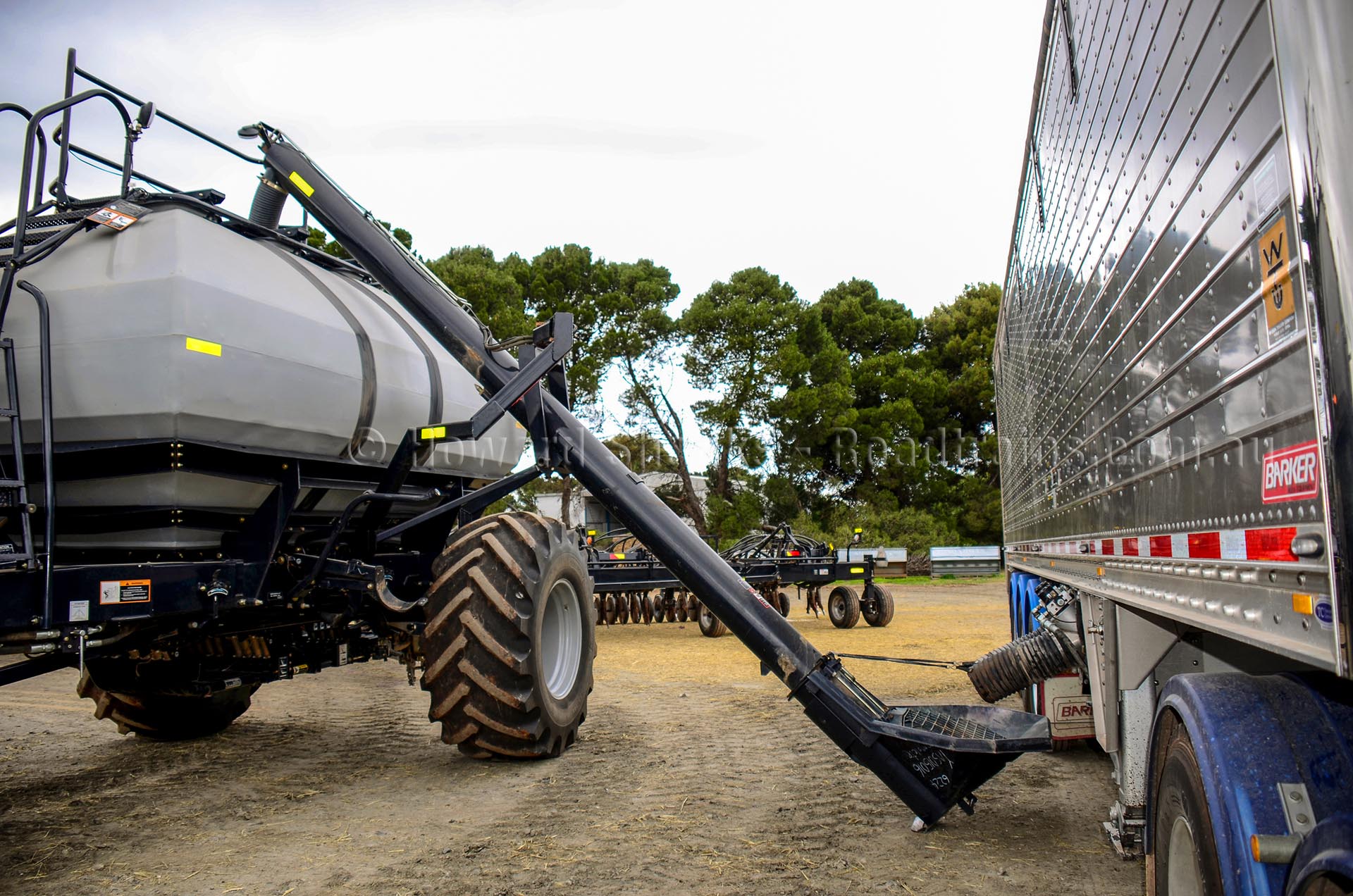 New features
New features
High on Jason’s list of features are those that improve operator safety. He says, “View windows in the sidewalls reduce the need to climb the ladder to check on the load. Inclined ends make it safer and easier standing on ladders, while the addition of an electric tarp means there is no more fighting with the wind to open and close the tarp.”
No list of modern safety features would be complete without an antilock brake system (ABS) to minimising jackknifing and roll-over. But Jason points out that an ABS system also saves money. “ABS keeps the wheels from locking up, thus minimising flat spotting of tyres,” he explained.
New trailers tend to have more lights to increase safety and make manoeuvring at night easier. This is possible because light emitting diodes (LEDs) are replacing standard incandescent bulbs. LEDs draw one-tenth the power of the old bulbs, and that keeps the amperage manageable when up to 60 lights are burning on one trailer.
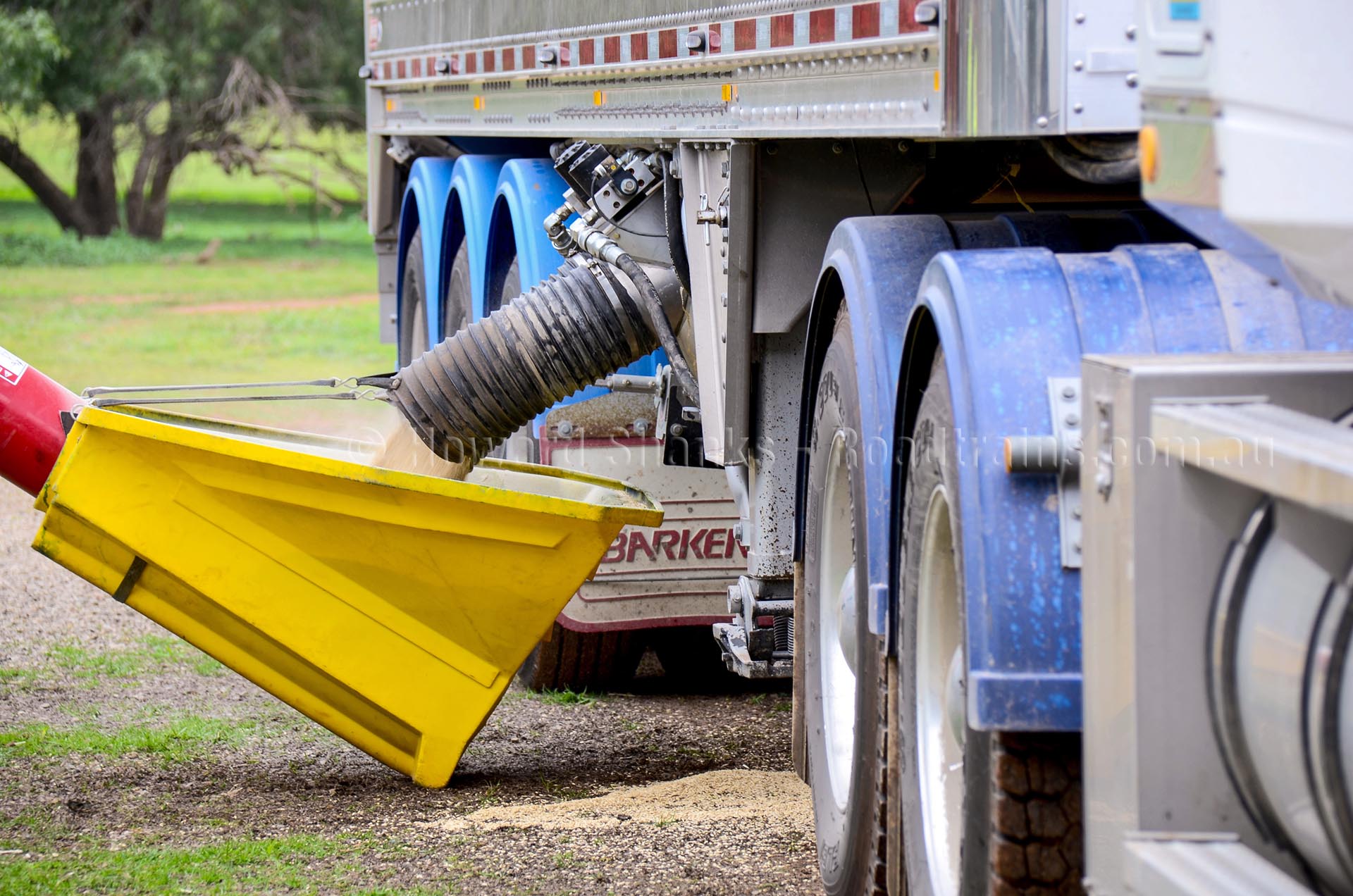 Design matters
Design matters
Jason agrees that safety is a big factor in new trailer design. “Simple things like easy-to-operate tarps and a fold-down ladder can make a big difference, especially to an older driver,” he said.
If you want a trailer that’s easy to operate, Jason suggests you pay special attention to the doors, since they are the moving part you’ll deal with most often. If you’ve operated an older trailer with door slides, you know that they can be difficult to open even when empty. Add a load of grain on a frosty morning and the doors can freeze up completely. Gear ratio doors and electric motor openers can be time and sanity savers. Jason suggests that, at the very least, you should consider upgrading from a sticky slide door to some kind of roller door, like the self-cleaning rack and pinion door, which is swept clean as it glides past the trap frame that are standard on a Wilson trailer, which are remotely controlled by the Shur-co ProTrap wireless electric door opener.
The trailer’s design plays a big role in how efficiently it carries its load and how cleanly it unloads. There are as many different philosophies on sheet metal angles as there are trailer manufacturers. Just about all of the newly designed trailers unload better than the old ones. Look for designs that will be structurally strong and easy to repair. Small sections of sheet metal, for instance, are easier to replace if the side of the trailer gets damaged.
Also look for a smooth interior and a steeper angle on the sides of the hopper. A design in which the metal bends around the corner and rivets down the center helps to keep grain from getting hung up on the rivets.
No design is perfect though. If you need your trailer to empty out really clean, you may want to add an air-operated vibrator.
Another design improvement in most new trailers is more clearance between the doors and augers.
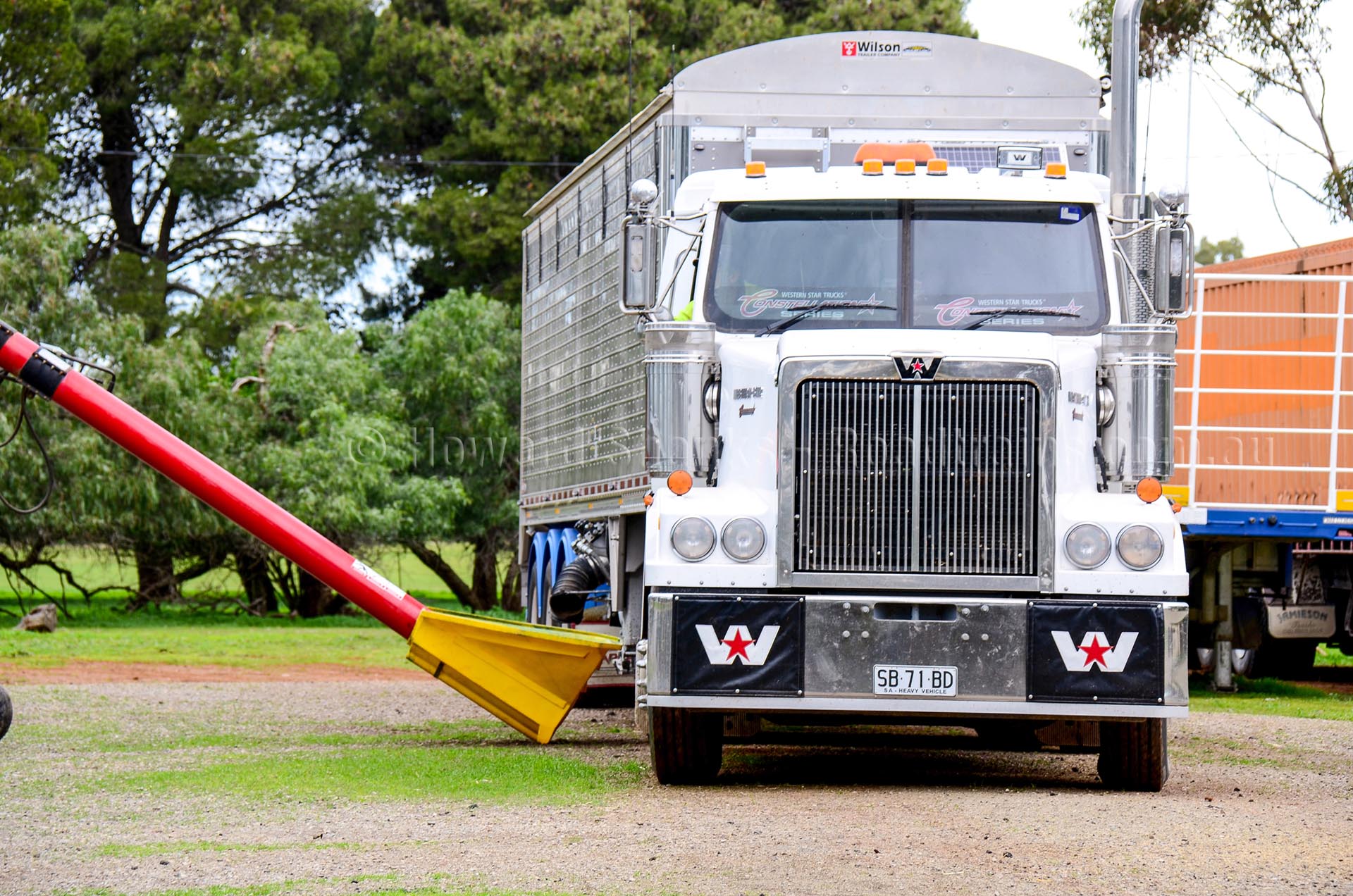 Deluxe features worth it?
Deluxe features worth it?
Trailer weight is crucial for transport operators who want to carry the maximum tonnes per kilometre while still staying legal. Meantime farmers who haul on short runs from paddock to town might not feel weight is important enough to spend the extra money on aluminium. But the aluminium does last longer and improves resale value. Plus you get some deluxe features on the new aluminium models.
The Wilson Pacesetter uses the ProTrap Electric Trap opener, which features all-metal gears and housing, to handle the hard stops. Each trailer is self-sufficient and comes with a Shur-Co solar panel battery kit to run the trap opener and optional electric tarps. This compact 30-watt solar panel, is just 20 millimeters deep and charges the battery that is rated for over 5,000 cycles.
To enhance the flexibility of the Pacesetter Super-B at unloading time, Wilson also offers optional ‘Ag Hoppers’ such as the side cutes with a ‘true’ high ground clearance of 530 millimeters that are easy to operate and stow while in transit.
Lease or own?
Darryl Johnston from the Peter May Group suggests that many farmers could learn a thing or two about financing equipment by looking at how agribusiness managers treat their capital expenditures.
“Too many farmers tend to think of equipment in terms of absolute cost and/or ongoing payments,” Darryl explained. “Agribusinesses, on the other hand, rely on a much more margin-oriented thought process. They determine the revenue gained (increased income or decreased operating cost). Then they calculate the cost of each unit purchased and compare the revenue gained per unit against the cost per unit. This process is called margin management.”
For most farm equipment, margin management requires that you figure cost per hectare against additional profit gained per hectare. In the case of a grain trailer, you might instead figure cost per tonne moved versus additional profit per tonne.
 Western Star 4800
Western Star 4800
A vital part of maintaining top-notch service to customers involves using vehicles specified for the application and maintaining them in top condition to keep downtime to a minimum.
Moving back to the topic of the Western Stars, Darren reiterated his belief that reliability is the number one must-have with equipment. “It’s part of our philosophy of moulding things into the business that we can set and forget. Of course, price is always going to be an issue as well as the ongoing cost of maintenance.”
“I know how reliable Western Star trucks are because our older 4800 is still going strong and its over six years old now,” he admitted. “And, it looks and goes like a new truck. In fact, many people have trouble telling the difference between the two, that’s well Western Star last”.
Under the hood of this Western Star is Cummins ISX engine rated at 500hp that develops 1850lbft torque. Transmission is an 18-speed Eaton coupled to Meritor RT46-160 rear axles with cross-locks in both axles, and a ratio of 4.56:1 riding on Western Star’s Airliner suspension.
“The versatility of this 4800 Western Star is another big advantage to us, that’s because it is rated up from 70,000kg in single trailer configuration through to 90,500 kg road train if we were that keen to tow one,” Darren revealed. “Also the visibility and manoeuvrability around tight farm laneways of the 4800 is exceptional when you consider it is really quite a big heavy duty specked truck.”
“I really love the look of these 4800 Western Stars but from a business point of view, I have to leave my emotions behind and focus on the productivity gains to stay ahead of the game when it comes to specking our trucks,” Darren concluded. “The fact that the 4800 Western Star turned out to be the ideal model for our application is just a bonus.”

